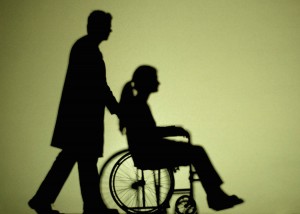
A recent report came out a few days ago linking federal bankruptcy court records with cancer survival rates. For many Americans the findings were shocking, but for those of us who work in bankrupcty, the numbers were not all that unexpected.
“On average, bankruptcy rates increased fourfold within five years of diagnosis” of a life-threatening disease. The study, by the Fred Hutchinson Cancer Research Center, went on to report that “compared to the general population, bankruptcy rates were nearly twice as high among cancer patients one year after diagnosis, and that the median time to bankruptcy was just two and a half years after diagnosis.” That is not a prognosis that anyone suffering from a life-threatening illness wants to hear. The good news – cancer cure rates are rising. The bad news – if you’re a cancer survivor you’ll more than likely have to file bankruptcy just to make ends meet during and after the treatment regime.
Medically-related banktupcties have been on the rise since the mid 1980’s. Catherine Arnst of Business Week reported in her story, “Study Links Medical Costs and Personal Bankruptcy” that “in 1981, only 8% of families filing for bankruptcy cited a serious medical problem as the reason. In a 2001 study of bankruptcies, five states studies by researchers found that” illness or medical bills contributed to 50% of all filings.”
Reasons for the spike in medical bankruptcies are related directly to the proportion of costs now being thrust upon the insured rather than paid by the insurance company. While medical premiums, coinsurance and copayments are at the highest levels ever, patients and their families are enduring a labrynth of legalese, loop holes, and paper work that leaves them confused about their coverage and fighting with insurance company voicemails, case workers, and appeals processes in order to have their claims paid – all while enduring countless hours of chemotherapy, radiation and the ill effects of their diseases. Add to that the potential for job loss due to illness and subsequent loss of medical insurance, and you have the perfect storm of financial disaster.
Unless you are one of America’s billionaires, your family may be just one catastrophic illness away from bankruptcy, too. Having health insurance is no guarantee that you’ll financially survive your disease either. Families with private insurance (not Medicare or Medicaid) reported that the average out-of-pocket medical costs were $17,749 while uninsured families faced $22,658 in medical costs. The current proposals to boost coverage to the uninsured is a step toward alleviating some of this damage, but still leaves the hard-working American holding the financial burden for financing a government medical plan as well as devising a way to pay their own medical expenses in the event of a serious illness. That’s a heavy price and an even heavier burden to bear.
What happens next is something that we may have all considered when faced with a financial crisis – families begin to put the medical costs onto one or more revolving credit cards, which they cannot repay. The debt continues to snowball until an avalanche strikes effectively wiping out the family’s financial house. While this debt is difficult to quantify during a bankruptcy proceeding and is one of the reasons why so many in Congress and the Senate are able to deny the cause, we have seen first-hand how an illness serves as the impitus for a downward financial spiral resulting in bankruptcy.
